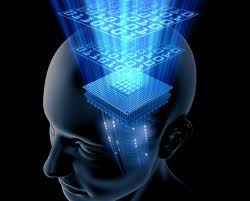Thank-you to http://ahmritanaturalmentalhealth.wordpress.com/ for this very interesting guest post. 🙂
Neurofeedback is a treatment which has evolved from Biofeedback. Many of you would have heard about this concept:
|
“…is a process that enables an individual to learn how to change physiological activity for the purposes of improving health and performance. Precise instruments measure physiological activity such as brainwaves, heart function, breathing, muscle activity, and skin temperature. These instruments rapidly and accurately ‘feed back’ information to the user. The presentation of this information — often in conjunction with changes in thinking, emotions, and behavior — supports desired physiological changes. Over time, these changes can endure without continued use of an instrument.” Three professional biofeedback organizations, the Association for Applied Psychophysiology and Biofeedback (AAPB), Biofeedback Certification International Alliance (BCIA), and the International Society for Neurofeedback and Research (ISNR), arrived at a consensus definition of biofeedback in 2008.Read more here
http://en.wikipedia.org/wiki/Biofeedback |
|
The concept of Biofeedback has been practised for time immemorial by Yoga and Pranayama students and masters. Here in the west it has developed to its current form since the late 50’s and was very popular in the 80’s. Since then it has sadly somewhat disappeared from the popular radar again, as do so many worthy and non invasive natural therapies. Mostly due to funding issues in the ever ongoing effort of pharmaceutical companies to suppress what would outshine their products.
But back to topic – Neurofeedback – “Neurofeedback is a type of biofeedback that uses electroencephalography or fMRI to provide a signal that can be used by a person to receive feedback about brain activity.”
Research so far has been working in particular to prove its worth as a treatment of epilepsy, autism, headaches, insomnia, addiction problems and more, but its benefits can be felt by anyone who has suffered an emotional trauma.
http://en.wikipedia.org/wiki/Neurofeedback
However, you do not need to be diagnosed with a medical condition to benefit from this treatment, as it is designed to optimize brain function.
Like many I became aware of the biofeedback movement in the late 80’s, but never did much with it. By chance a friend of mine gave me a rather large voucher for a bookstore in 2007. One of the titles I bought was:
“The Healing Power of Neurofeedback”, (2006), by Stephen Larsen Ph.D. Healing Arts Press.
Which humbly and quietly sat in my bookshelf for three years, until I was hunting for something new to read during semester break. What I found in this book had me totally spell bound, a treatment called LENS Technique, developed by Len Ochs.
http://www.ochslabs.com/
After several hours of googling, I found a practitioner in Melbourne, who had recently migrated from Germany. I booked myself in for six treatments, which was explained to me as a usual course of treatment. Even though, the cost was not outrageous, I could instantly see, that it would be out of reach of exactly the majority of the population needing it – no medicare funding!
At the time stress levels in my life were approaching frantic on the stress meter, due to work, study and family commitments. Sounds familiar doesn’t it? Well I was turning into a bit of a sleep deprived grouch 🙂
What I experienced even after the first treatment was sensational (and lasting)– I became acutely aware of all the tension in my body; that I was holding a pen like a sword, my shoulders had taken up position at ear level and my breathing was shallow. By the time I got home after an hours city driving, I was in total and utter relaxation – of the ragdoll kind, but aware and alert, I felt fantastically at peace. I would recommend it to everyone!
Since, I found another practitioner of Neurofeedback – Dr. Shum, the Psychiatrist in Australia who has also helped develop Subconscious Freedom Technique
http://au.blurb.com/search/site_search?search=Subconscious+Freedom+Therapy
During LENS treatments you sit relaxed in a comfy chair, the practitioner connects several tiny electrodes and you can keep an eye on your heart and breathing rate on a screen. While treatment was going on I was watching a lot of David Attenborough nature documentaries, which I found helped the relaxation tremendously. At no point was there any discomfort or difficulty. The positive outcomes kept piling up, I was able to relax again, sleep better, manage my workload better and generally felt a fair bit more human friendly, which is a big plus when you work in Mental Health.
I would really like to encourage you to get the book, have a look at the websites and contact a practitioner in your area – no amount of me raving on about how greatly it helped me can substitute having your own experience.
Ahmrita’s blog is based at http://ahmritanaturalmentalhealth.wordpress.com/
for further information on nautral mental health many topics.


